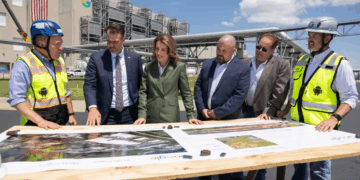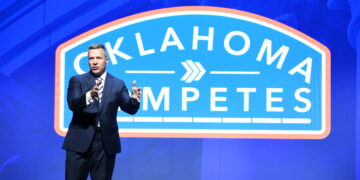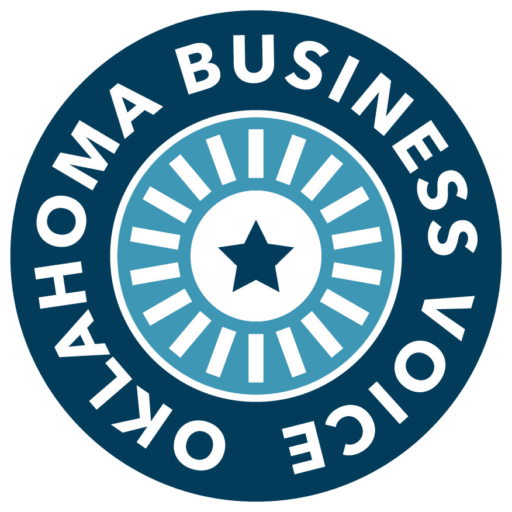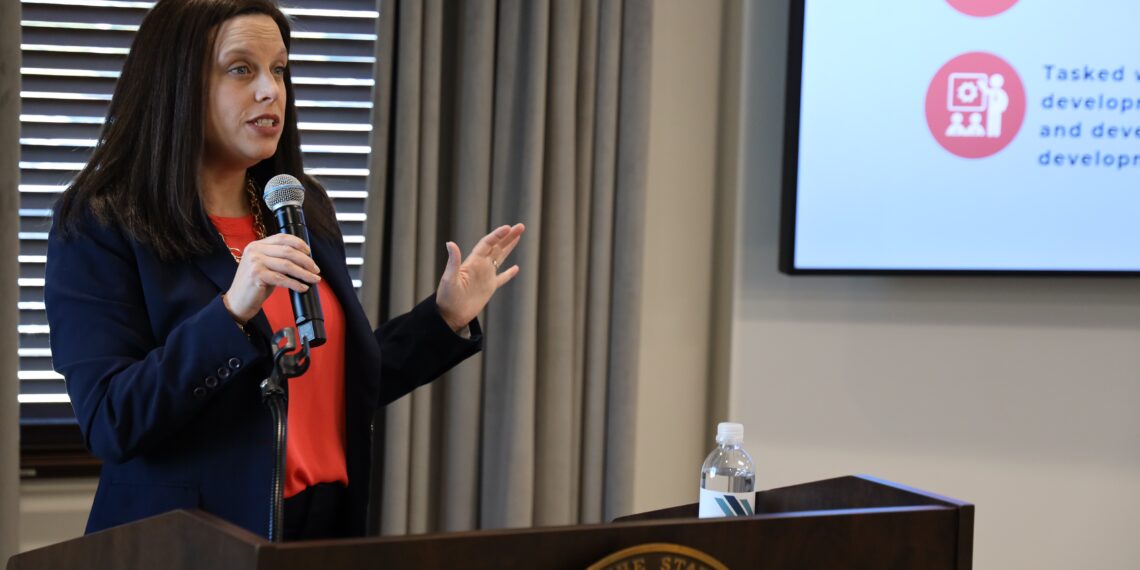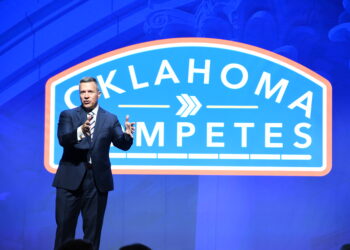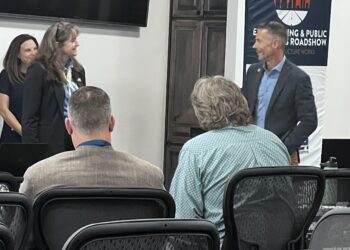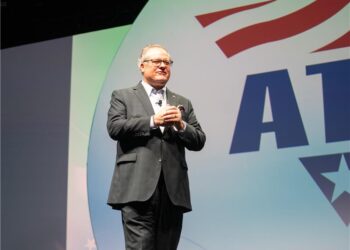OKLAHOMA CITY (OBV) – Kyla Guyette is Oklahoma’s first Workforce CEO, and she’s been working hard the past few months to make Oklahoma one of the top business states in the nation.
As Workforce CEO, Guyette leads the Oklahoma Workforce Commission’s efforts to coordinate workforce development activities statewide, ensuring alignment with industry needs and creating robust opportunities for job seekers. Her work directly supports the goals outlined for the Workforce Commission by fostering collaboration between public and private sectors, educational institutions and community organizations to address Oklahoma’s workforce challenges effectively.
Much of Guyette’s career has been focused on workforce development. She was the founding president of Workforce Mid-South, Inc. and served as the executive director of the Greater Memphis Local Workforce Development Board. Through those roles, she oversaw workforce development funding and initiatives in Western Tennessee’s four-county area.
Guyette also held leadership positions at ResCare Workforce Services and Tampa Bay WorkForce Alliance. Her most recent positions include CEO of The Work Lab and director of strategic partnerships at KRA Corporation.
Senate Bill 621 established the Oklahoma Workforce Commission when it was signed into law in June 2023.
Guyette sat down with The State Chamber of Oklahoma’s president and CEO, Chad Warmington, for a discussion on what it will take to grow the state’s workforce and make Oklahoma one of the best states in the nation for business prosperity.
That one-on-one discussion is as follows:
Warmington: We’re here with the first ever executive director of the Oklahoma Workforce Commission, Kyla Guyette. Kyla, thanks for sitting down with us for a few minutes.
Guyette: I love it. Thank you for having me.
Warmington: We’re super excited you’re here. And again, you’re the first. But this isn’t your first gig in workforce development. Tell us a little bit about your background, where you’re coming from, and then we can kind of go with this with some questions from there.
Guyette: Sounds good. I have been in workforce development roughly 20 years. Hurricane Katrina got me into workforce development; so, I could not have seen this coming. And I did not think workforce development was a job back when I was picking my careers on Career Day. So, I went and I got really involved in that relief effort and trying to figure out how to improve businesses and get them back on their feet and help folks find jobs.
And I figured out, I love that. I love helping communities to figure out how to be more efficient, more effective, and really start to grow their economies. And that led me to the world of workforce development. I have done it ever since. I’ve worked probably in 18 states at this point. So, I’ve seen the way that it works really well, and I’ve seen the way that it works not so well.
And always in the back of my head, I thought, “Oh, if I was ever in charge, what are the things I would change?” And I kind of had a running list in the back of my head. And so, I am very excited to be able to execute on [that list].
Warmington: I was going to say, yeah, you get to pull the trigger and pull that list out and execute for Oklahoma. So, tell me from your perspective, what is Oklahoma’s reputation on workforce at a national level now? And then, on your checklist, where are we going?
Guyette: I believe Oklahoma has not generally been seen as a participant in the national conversation. Not participatory in some of the national boards and the advocacy piece. I stood on the National Association of Workforce Boards Board of Directors. And Oklahoma was not a participant. So, I think in that larger conversation was mostly independent; not really a part of the larger voice.
And of course, in my now role, I want to make sure we are integral. We are going to be at the table at every conversation that involves workforce or workforce related topics. That’s childcare. That’s housing, that’s all of those other things. So, we want to put Oklahoma on the map and make sure folks know all of the exciting things that we have here and what is yet to come.
Warmington: From your perspective, now that you’re at the table at the national level, you’ve got 18 different states of experience. Give me an example of a state that’s doing it really well that we kind of should aspire to.
Guyette: Sure. There’s a couple of different states that have really been in this workforce game for a very long time. From a business standpoint, you’ve had some long-term players I think that we compete with a lot in Texas and Florida. They have made themselves a very business friendly state. From the really collaboration of partners, you have states like Maryland and Pennsylvania that for a very long time have gotten together to say, “How do we do this really well and more efficiently?”
And so, there’s always ways that we can learn from some of those. And also from some of those that didn’t do it so well, we can make sure to steer away from that.
Warmington: Dig in a little deeper on those states. The key competencies of the states that do it well are what? What makes those states special? What’s their magic sauce at a high level that makes them good at workforce development?
Guyette: Yeah, especially the two states that are business friendly, of course, they have zero income tax. They are very friendly as far as a business environment. So, that attracts a lot of folks into that, wanting to move into those states and exponentially grow. And because you can build the labor force around some businesses that are very excited to be there.
You know, Florida is becoming one of those chip magnets and everybody is coming into that economy. We want to make sure we can also be very competitive from a business standpoint. In Maryland and Pennsylvania, they have taken the funding that we all receive – every state receives federal funding for lots of different things – and said, we’re going to put our money into the biggest impact.
Maryland restructured recently their education funding. Now, $6 of all the money is for middle school kids and high school kids. So, every child in Maryland has kind of a $6 that gets put into the bank. And it’s given to workforce, directly into workforce. Instead of in the Department of Ed, they have some folks that are more experienced doing that work directly in workforce development for kids.
Pennsylvania has always used their TANF (Temporary Assistance for Needy Families) funds. TANF funds are incredibly flexible in the way that you can use them. Most people think of them particularly in that direct service capacity, but actually a small part of that is actually used for participants. Most of the time that is used for other projects, sometimes filling in pension funds and all of those other kind of things. Well, Pennsylvania has said, “We’re not going to use it for that. We’re going to use it towards workforce development.” So there’s a…
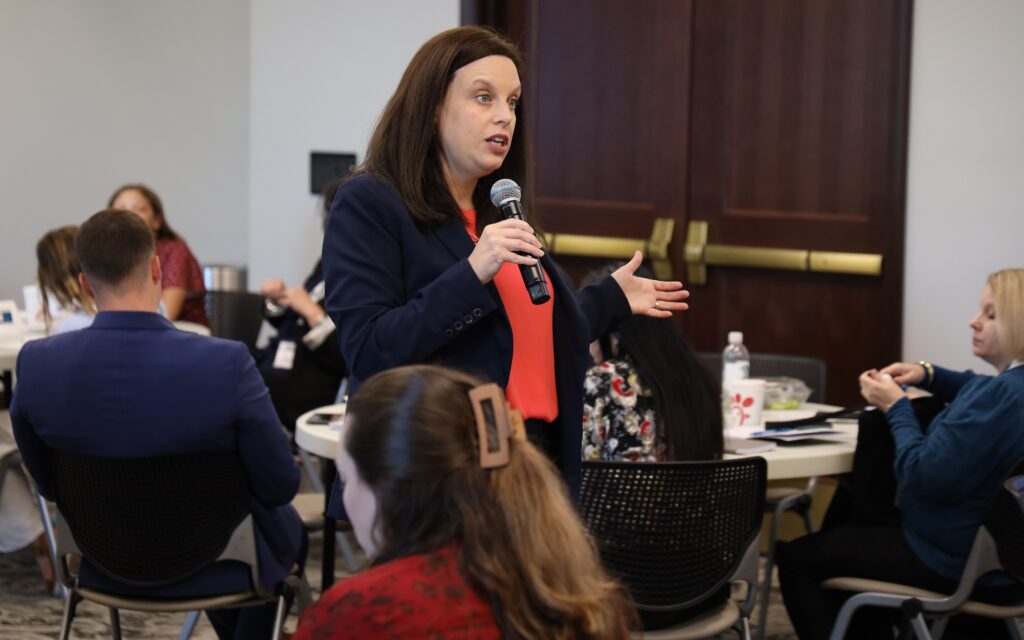
Warmington: …a lock box, if you will. I think that’s an important point. Recent news in Oklahoma this week where some agencies were moving some dollars around that maybe they shouldn’t have. And I think that’s what we want to avoid, right? So that there’s some good strategies on keeping workforce dollars for workforce. But Oklahoma really hasn’t dedicated a lot of specific state dollars for workforce. So, let’s touch on that. But the bigger picture of that question is, you’ve been on the ground for a couple of months, what are you seeing now? What’s your initial assessment of where we’re at and where we need to go? And do we need a mechanism like a Maryland or a mindset that we’re going to dedicate workforce dollars for workforce? And how do we protect that?
Guyette: Absolutely. The answer is yes. Unless there is significant state funding in workforce development, you are going to have a really hard time in having long-lasting change, long-lasting projects. Now more than ever, federal funding is a little bit up in the air. We’re not sure what that is going to look like from year to year, even from month to month.
States really have to be smart about how they are investing their own funding into workforce projects and making sure what their key priorities [are], because what our key priorities as Oklahoma might not line up to what those federal priorities are. We are, you know, an oil and gas and energy-producing state. That may be antithetical to some of the other funding that comes out in the green jobs or all of those things. We need to figure out what our assets are here in Oklahoma. If we aren’t able to make an investment, why should anyone else? We’ve got to get really clear and bring to the table what we are willing to do.
Warmington: Top three priorities, if you had to pick. I know you got a laundry list. It’s a target-rich environment because you’re the first ever to do this job, the first ever to even hold this. But if you had to pick your top three things, what would it be? The top three things you’re saying, “I’m going to focus on these for the next couple years because they’re the best low-hanging fruit with the most impact.”What would they be?
Guyette: Number one I think is the most interesting question. There’s not one person in Oklahoma that can tell us what our annual investment in workforce development is. Workforce development is kind of that line item you put in a budget, and it’s a magical key that you can get some funding, but no one is tracking what that overall spend is, what the spend is for, and did we actually get that back as a state?
And so, the Workforce Commission is spending lots of time delving into everyone’s budget to make sure we can tell you as Oklahoma, “This is what your spend is. This is where it went. Was it successful? Was it not successful?” We’re going to produce a report card for that every single year.
We’re also creating a dashboard that you can see how projects are doing in real time. I think that’s really important that Oklahomans know where their money’s going and how it’s doing.
We also are going to make sure the data talks to each other. Data in all of these federal systems and state systems don’t necessarily interrelate. I say sometimes it’s like comparing apples to puppies. They’re not remotely the same. We’re going to develop a system that takes all of that data – we’re talking about from health, from education, from labor, from everywhere that we need it from – and we’re going to make sure we get it into a system that makes the data and it relate to each other, gives us the entire workforce picture, so we know where we are and how we’re doing, and then stick some AI on top of that so much as we can predict what an economy would look forward if certain market conditions happen. [Let’s say the] Department of Commerce lands a really large employer into this area. What would that look like? Where would the jobs come from? How would we meet that need?
We can also start figuring out from an economic development standpoint what projects we have the most likelihood of winning. Because the shotgun approach, while it may be effective for some, it’s time consuming. You’re just waiting around and it does not allow our education system to prepare an adequate pool of talent for the things that we’re really good at. So, we’re going to figure out from a data perspective, what are we going to be when we grow up? What are we going to be in the long run? And double down, triple down on that. So, then we can draw those economic development projects here.
Warmington: That makes sense. I know you’re a big advocate for access to training. I know that’s a huge part of your priorities. But what does that mean? What does that look like? If you were to say, Oklahoma’s got to get laser focus on a couple of things in the training space, what do we mean when we say that?
Guyette: I think “upskill” has become a buzzword. Everyone now uses that word. But the idea is world of work is going to look different five years from now, 10 years from now. And so helping our state and our jobs gain additional skills to make them ready for those. That should not be dependent on eligibility and low income and all of the other criteria that comes with most of our funding streams. We need to make it widely available to help Oklahomans continue to rise with the pace of how the world is changing. Making that really accessible and affordable and all of those things [is important].
And also, value innovation. We can’t dothings – training included, education included – the way we have always done them and just expect it to move as quickly as business moves, because that’s just not what happens. We have to get really flexible about how we deliver these services. Education is going to have to look different. Rather than semester-based credit hour programs, we’re going to have to do competency-based. The competency businesses will define those, students will demonstrate, let’s get them out of there.
We’re going to have to produce in a much different way. And that also increases our ability to hit every Oklahoman if we free up the system and make it a little bit more flexible.
Warmington: Makes total sense. So, let’s let’s wrap up with this. The genesis of the Workforce Commission was a detailed business poll that we do every year. And business leaders said that their number one issue was workforce and economic development. So, we spent months working on that. We had a huge study done. And at the end of the day, we’ve got all these great initiatives and we didn’t have anybody hand it off to. Now we do. And you’ve got your own set of initiatives, and we can work through all those recommendations. But what I wanted to end with is, give us your thoughts on the critical kind of symbiotic relationship between economic development and workforce development. And what I would argue is at the state level, we’re going to be far ahead of maybe our economic development entity with our workforce system, if we can get there with your leadership. The beauty of that is I think that workforce drives economic development, because if you don’t have a talent pipeline aligning to the industries that we need and say we want, it doesn’t matter, these companies aren’t coming here. So, kind of give us like an aspirational thought on when we get workforce right. Economic development will look like what?
Guyette: For us, it’s going to look like very targeted wins. I’ve sat in many conversations with site selectors – as I’m sure you have too – and one of the questions everybody wants to know is, “Where’s the talent going to come from?” And a lot of times, they don’t have the length of startup ramp in order for us to then start a program and then start to get folks trained. They need it right now.
So, we need to figure out what are those three to five key areas where we are going to make training laser fast. We are going to make it the best training that we can possibly do. And we’re going to get folks trained in those talent pipelines and ready to go.
We are then going to make sure commerce is out there targeting those particular industries, because then they can say at the table, “Come to Oklahoma, here’s the talent pool that we have – this educated talent pool. Here’s the assets that we have. It’s a no brainer. Come to Oklahoma.”
We’re going to be driving a little bit of that by defining what those key areas are and helping to get all of the roadblocks out of the way for training. That’s really important that we are removing all the roadblocks.
Part of what the Workforce Commission is here to do – I say it’s like the conductor of a very large symphony.
We have workforce happening in 40ish different agencies and different groups around the state that don’t necessarily talk to each other. Most folks don’t know what somebody down the street is doing and maybe asking for funding for the exact same thing. Now workforce has a coordinating body to say, “Okay, down the street, you two collaborate together. Let’s use that funding together and serve twice as many folks.” We’re doing that on a statewide capacity so that we can really hone in on where we can be successful. How do we move all the roadblocks, get Oklahomans those jobs, and become a real driver of economic development?
Warmington: It fits so perfectly. And you don’t even know this, but when we were sitting in our conference room three years ago talking about the future you and about the efforts and what [would be] the results of what you were going to be doing, we had this aspirational kind of phrase that we said that we want to be the first state that perfectly aligns its workforce development entities. And we want to be a state that people call us up on the phone and say, “I want to come to Oklahoma because of your workforce.” Not calling us up the phone and saying, “I can’t come to Oklahoma because of your workforce. And I think you are perfect for the job. We’re lucky to have you. Thank you so much for articulating your vision.
And the beauty of it really aligns with this overall vision that we all have of really driving Oklahoma to prosperity. We’re going to do that through our workforce development excellence. And you are a fantastic leader in that. Thank you for doing it. And thank you for being here.
Guyette: Thank you so much for having me. I have never had more fun on a job, and I can’t wait to do it for a very long time.
Warmington: I’m excited. I keep telling everybody. I said she’s never had more fun in her first 45 days or 60 days. And that’s a good sign that you’re seeing opportunity and there’s optimism, and you’re certainly going to bring the energy. Thanks so much for doing it.



